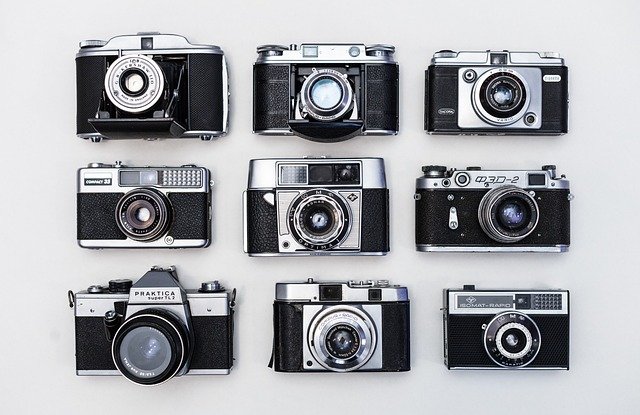The Resurgence of Analog Photography in the Digital Age
In an era dominated by digital technology, a surprising trend has emerged in the world of photography. Analog photography, once considered obsolete, is experiencing a remarkable revival. This unexpected resurgence has captured the attention of both seasoned photographers and a new generation of enthusiasts. As digital cameras continue to advance, why are so many turning to film? Let's explore the fascinating world of analog photography's comeback and its impact on modern visual culture.

A Return to Craft
Analog photography demands a level of skill and patience that many find lacking in the instantaneous world of digital. The process of loading film, manually adjusting settings, and developing photographs in a darkroom has become a form of meditation for many practitioners. This return to craft allows photographers to slow down and reconnect with the fundamentals of their art, fostering a deeper appreciation for the medium.
Nostalgia and Authenticity
For many, analog photography evokes a sense of nostalgia, harking back to a time before the digital revolution. This nostalgic appeal has resonated strongly with younger generations who grew up in a digital world but yearn for more tangible, authentic experiences. The physical nature of film photographs—from the negatives to the prints—provides a sense of permanence and realness that digital images often lack.
The Influence on Contemporary Aesthetics
The resurgence of analog photography has had a significant impact on contemporary visual aesthetics across various media. Fashion magazines, music albums, and even social media platforms have embraced the look of film, with digital filters and editing techniques mimicking analog effects. This trend has blurred the lines between digital and analog, creating a unique visual language that combines elements of both worlds.
Educational Renaissance
Photography schools and workshops have seen a renewed interest in analog techniques. Many institutions have reintroduced darkroom facilities and film photography courses to meet the growing demand. This educational renaissance has not only preserved important historical techniques but has also inspired a new generation of photographers to explore the full spectrum of their craft, from vintage processes to cutting-edge digital technologies.
The Collector’s Market
As interest in analog photography has grown, so too has the market for vintage cameras and film. Collectors and enthusiasts have driven up prices for classic models, while manufacturers have responded by reintroducing discontinued film stocks and even developing new analog cameras. This thriving market has created a unique ecosystem where the old and new coexist, supporting both nostalgic collectors and contemporary practitioners.
Sustainability and Environmental Concerns
Interestingly, the analog revival has also sparked conversations about sustainability in photography. While digital photography has its own environmental impact through e-waste and energy consumption, film photography raises questions about chemical usage and waste. This has led to innovations in eco-friendly film development processes and a renewed focus on the longevity and archival quality of photographic materials.
The Digital-Analog Hybrid Approach
Perhaps the most intriguing development in this resurgence is the emergence of a hybrid approach that combines analog and digital techniques. Photographers are experimenting with shooting on film and then scanning and editing their images digitally, or using digital cameras to capture images that are then printed using traditional darkroom processes. This fusion of old and new technologies is pushing the boundaries of what’s possible in photography.
Cultural Impact and Exhibition Trends
The analog revival has also influenced the way photography is exhibited and consumed. Gallery shows featuring film photography have seen increased attendance, with audiences drawn to the tactile quality of prints and the unique character of analog images. Museums and archives are reevaluating their collections, giving new prominence to film-based works and exploring the materiality of photography in the digital age.
Looking to the Future
As we look to the future of photography, it’s clear that the resurgence of analog techniques is more than just a passing trend. It represents a fundamental shift in how we think about image-making, authenticity, and the role of technology in art. The coexistence of digital and analog photography is creating a rich, diverse landscape for visual expression, challenging photographers to consider not just what they capture, but how they capture it.
The revival of analog photography in the digital age is a testament to the enduring power of tangible, hands-on creative processes. It reminds us that in a world of instant gratification and digital perfection, there is still immense value in slowing down, embracing imperfection, and connecting with the physical aspects of our art. As this movement continues to evolve, it promises to shape the future of photography in ways that honor its past while embracing the possibilities of the present.





